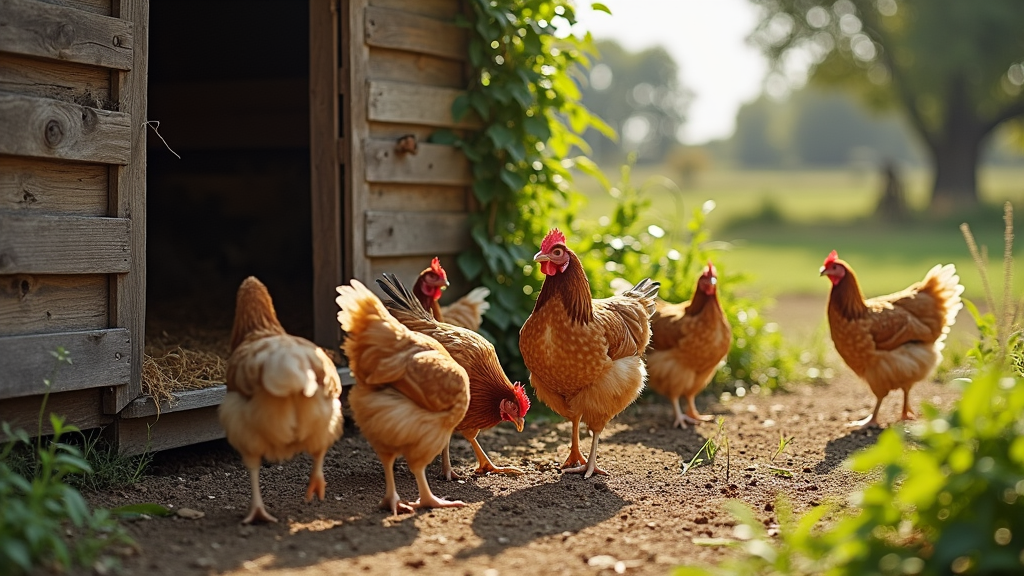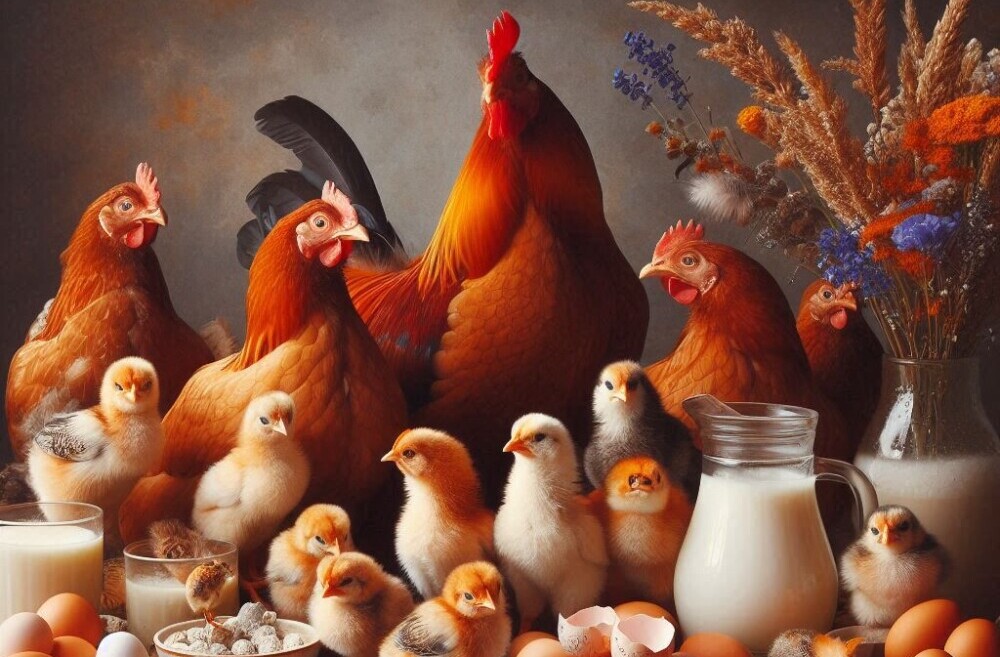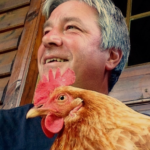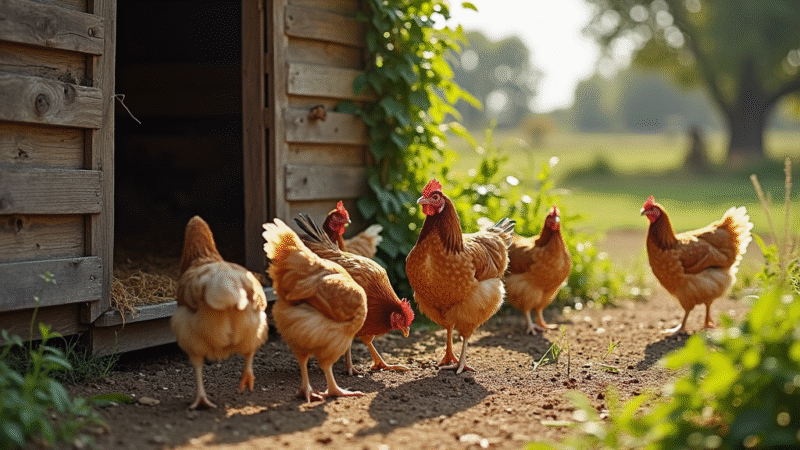
Raising chickens can be a rewarding adventure, especially when you choose breeds that deliver on two fronts. Dual-purpose chickens not only offer a steady supply of eggs but also provide meat, making them a practical choice for small farms and backyard enthusiasts.
In this article, I share insights on 10 dual-purpose chicken breeds that are ideal for both the nest and the pot. Whether you are new to chicken keeping or looking to diversify your flock, these breeds offer a mix of reliable laying, decent body size, and ease of care.
If you have been considering a blend of egg production and meat quality, you’re in luck. I’ve spent time researching these breeds to bring you detailed information on each one. Read on for a closer look at the unique traits of each breed and how they can fit into your coop.
1. Wyandotte – Reliable Layer and Hearty Provider
The Wyandotte is a popular choice among chicken keepers who prefer dual-purpose breeds. Known for its hardiness, this breed offers consistent egg production, with a typical yield of around 200 eggs per year. In addition to their egg-laying capabilities, their plump bodies make them a commendable option for meat production.
Key advantages of the Wyandotte include:
- Steady egg supply throughout the year.
- Robust and cold-hardy, perfect for varying climates.
- Eye-catching appearance that adds aesthetic value to your coop.
This breed’s friendly nature and simple maintenance add value for both beginners and experienced keepers. Their ability to forage for a portion of their feed further reduces overall feeding costs.
2. Orpington – Gentle Giant with Dual Appeal
Orpingtons are cherished for their calm temperament and impressive size. They lay a respectable number of eggs, around 200 per year, and their body size makes them a great source of meat. Their large frame and soft feathers contribute to an appealing profile for backyard chicken keepers.
What I appreciate about the Orpington is its adaptability. They thrive in both free-range environments and more controlled coop settings. Their calm disposition means they get along well with other breeds and present fewer challenges when integrating into a mixed flock.
Additional benefits include:
- A balanced ratio for both egg production and meat yield.
- Resilient in cooler temperatures thanks to their dense feathering.
- An excellent temperament that works well with families and newcomers.
3. Plymouth Rock – American Classic for Dual Purpose
Plymouth Rocks, sometimes referred to as Barred Rocks, hold a special place among dual-purpose breeds. Renowned as a classic American breed, they often deliver up to 280 eggs per year. Their moderate size and muscular build also make them suitable for meat production.
The Plymouth Rock stands out due to its versatility. It adapts to various living conditions and is well-suited for small farms or larger setups. Their strong foraging instincts mean that with the right setup, these birds can naturally supplement their nutrition.
Advantages include:
- High egg production is ideal for household use.
- Economical meat yield without requiring extra space.
- An enduring breed with a strong genetic lineage.
4. Rhode Island Red – Prolific Layer with Sturdy Build
Widely known for their vibrant red plumage, Rhode Island Reds are both prolific layers and sturdy birds. They commonly lay between 200 to 300 eggs per year. While they excel at egg production, their body structure is also well-suited for meat, making them a true dual-purpose variety.
What makes Rhode Island Reds appealing is their durability. They often perform well even in less-than-ideal management conditions, and their ability to thrive in varied climates adds to their widespread popularity. They are great foragers who need space to wander.
Benefits include:
- Excellent for gardeners due to their strong foraging nature.
- Resistance to common poultry diseases.
- A good meat-to-bone ratio for practical consumption.
5. New Hampshire Red – Fast-Growing Dual-Purpose Star
New Hampshire Reds share many similarities with Rhode Island Reds but are known for a slightly faster growth rate. They lay approximately 200 to 280 eggs annually and develop a robust body that is well-suited for meat production. Their red hue and energetic disposition make them a lively addition to any farmyard.
This breed is attractive to many because of its focus on growth efficiency and productivity. Their adaptability permits them to be raised in diverse farming situations, whether in small backyard setups or larger family-run farms.
Notable features include:
- Accelerated growth rate, ideal for meat production.
- Steady and reliable egg laying.
- Adaptability to various climates and living conditions.
6. Australorp – Australian Breed with Exceptional Laying Record
Originating from Australia, the Australorp is celebrated for its remarkable egg-laying record; some hens produce up to 300 eggs per year. Along with outstanding laying, they possess a body build that makes them suitable for meat production. Their calm and friendly nature makes them a favorite for small-scale and hobby farmers alike.
The breed’s efficiency in converting feed into egg and meat supplies is noteworthy, and it can thrive in a wide range of climatic conditions. Their glossy black feathers and laid-back attitude make them both practical and visually appealing.
Highlights of the Australorp include:
- High egg production for a sustained supply.
- Good meat quality paired with ease of care.
- Versatility in handling various climates.
- One of my favorite chickens (this is not exactly a highlight – I just thought you should know:D
7. Sussex – Historic Breed with a Balanced Profile
Sussex chickens have a long heritage and were originally bred for meat production. They yield around 180 to 250 eggs per year, which makes them a balanced dual-purpose breed. Their robust frame and friendly nature make them a practical choice for a variety of farming systems.
They are also known for being excellent foragers; this trait helps reduce feed costs as they are capable of finding a portion of their own food, making them economical in the long run.
Benefits to consider are:
- A heritage breed with reliable performance.
- A good balance between egg production and meat yield.
- Efficient foraging skills that reduce dependency on supplemental feed.
8. Delaware – Rapid Growth and Versatile Utility
Delaware chickens are known for their fast growth rates, which makes them a great option if you are looking for an added edge in meat production. They typically lay around 200 eggs each year, a satisfactory number that complements their meat benefits.
The combination of rapid growth and a sturdy build makes the Delaware ideal for those who want a breed that can serve both as a reliable layer and an effective meat bird. They are best suited for environments where space is managed well, ensuring that each bird has room to thrive.
Reasons to add Delaware to your flock include:
- Fast growth and development, ideal for meat usage.
- Consistent egg production to supplement your kitchen supply.
- Easy maintenance and adaptability to various farm setups.
9. Brahma – Majestic Bird Adapted for Cold Climates
The Brahma is a large, majestic breed known for its impressive size. While they don’t top the charts for egg production—averaging between 150 and 200 eggs per year—their substantial meat quality makes them a valuable addition to any dual-purpose flock, especially in cooler climates.
Their heavy build helps them maintain body heat during the winter, and their calm demeanor makes them easy to handle. Despite their size, Brahmas are known for their gentle approach, which is a nice bonus for effective flock management. I have had many Brahma roosters, and not a single one has been aggressive.
Key benefits of Brahmas include:
- Very important cold hardiness due to their large size.
- Substantial meat portions, ideal for hearty meals.
- A gentle temperament that complements a mixed flock.
10. Buckeye – Resilient Breed with Foraging Skills
Buckeyes are a dual-purpose breed developed in Ohio, recognized for their unique combination of good egg production and meat quality. They lay around 180 to 260 eggs each year. Their standout trait is their impressive foraging ability, making them highly efficient at sourcing a portion of their feed naturally.
This breed is especially suited for colder climates, as they exhibit strong resistance to cold weather. The Buckeye’s robust health and lively nature help maintain a productive flock while requiring less intensive care.
Main features of the Buckeye include:
- Remarkable foraging ability that lowers feeding costs.
- Strong resistance to cold, making them suited for cooler regions.
- Balanced egg production and meat yield that work well in both home and small farm setups.
Final Thoughts

Choosing a dual-purpose breed simplifies flock management while providing versatility in your food supply. The breeds discussed here, from the hearty Wyandotte to the resilient Buckeye, offer diverse benefits that can fill the dual role of egg layers and meat providers. This is especially helpful for those who want to maximize the productivity of a small flock or add variety to their farm.
When planning your flock, consider factors such as your local climate, available space, and your personal goals for both egg and meat production. Keep in mind that because they are dual-purpose, none of them are petite breeds. They’ll need some space.
I find that investing time in understanding the unique characteristics of each breed pays off in the long run. With a well-planned approach, dual-purpose chickens can enrich your kitchen with fresh eggs and provide tender, flavorful meat for family meals.
Have you had any experience with these breeds, or are you considering starting with one? Taking a closer look at their practical benefits might surprise you with just how rewarding raising dual-purpose chickens can be.
Additional Considerations
It is worth spending some extra time researching local care requirements and habitat adjustments that best suit your chosen breeds.
Furthermore, taking the time to speak with experienced chicken keepers can provide valuable insight into overcoming common challenges.
From managing seasonal changes to ensuring optimal nutrition, a thoughtful approach to each aspect of chicken rearing can make the entire process more enjoyable. This extra diligence often results in a noticeable glow-up for both egg production and meat quality, giving you the satisfaction of knowing that every effort contributes to a flourishing homestead.
Enjoy each day with your flock, and remember that every new experience is an opportunity to learn and grow as a chicken keeper. Love your chickens and they will love you back.
Take care. I wish you all the best with your flock.
Dave

Chickenmethod.com

